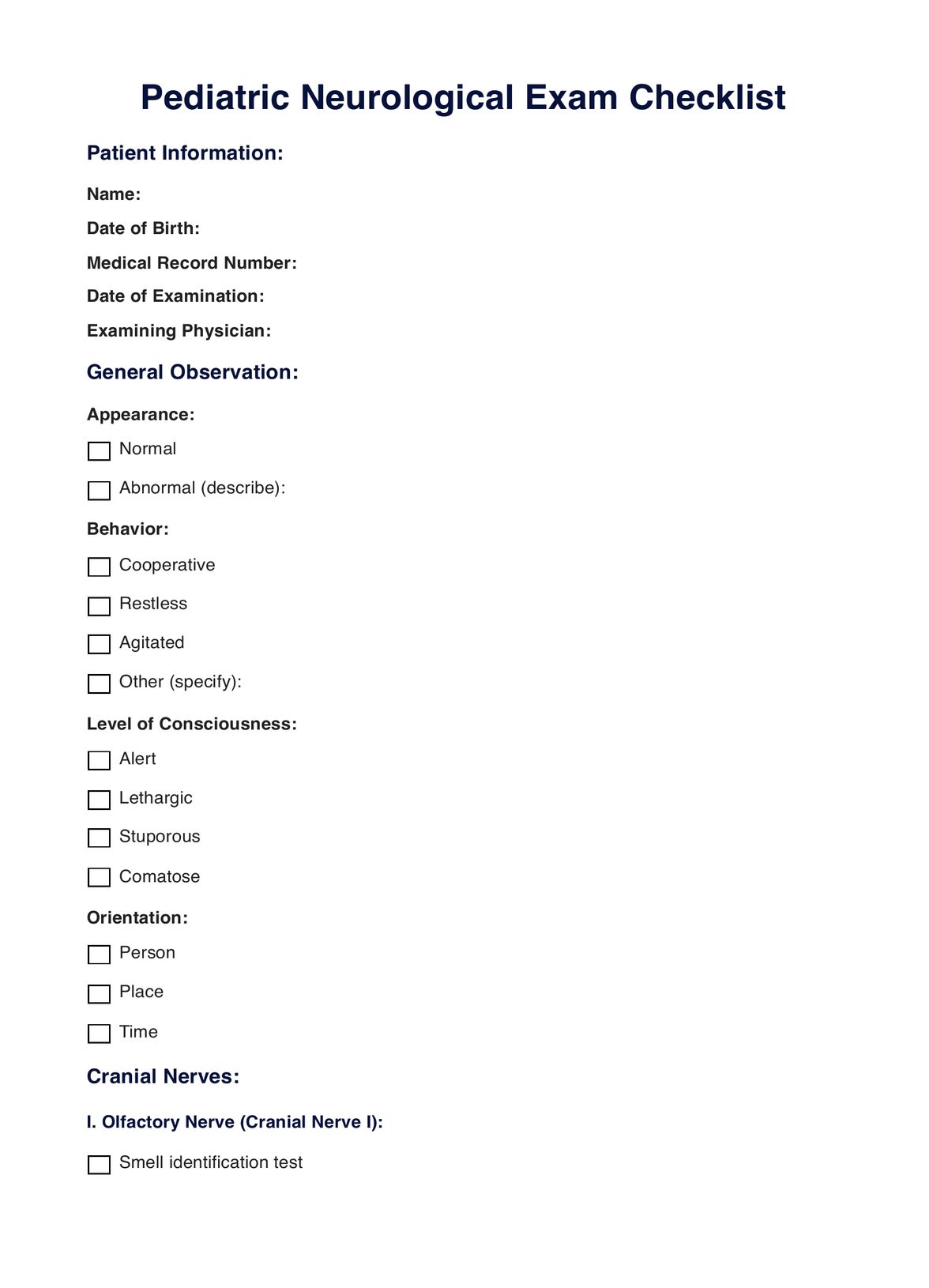A pediatric neuro assessment includes a thorough evaluation of cranial nerves, motor function, reflexes, sensory responses, and cognitive abilities. It aims to comprehensively assess the child's nervous system, providing insights into potential neurological issues.

Pediatric Neurological Exam Checklist
A pediatric neurological exam checklist is a useful tool for doctors to assess a child's neurological function. Download Carepatron's free PDF example checklist here.
Pediatric Neurological Exam Checklist Template
Commonly asked questions
To perform neuro checks on a child, systematically assess cranial nerves, motor skills, reflexes, sensory responses, and cognitive function. Utilize a standardized pediatric neurological exam checklist to ensure a thorough and organized evaluation.
The five major components of a neurological examination include the assessment of cranial nerves, motor function, reflexes, sensory responses, and cognitive abilities. These components collectively provide a comprehensive picture of the child's neurological health.
EHR and practice management software
Get started for free
*No credit card required
Free
$0/usd
Unlimited clients
Telehealth
1GB of storage
Client portal text
Automated billing and online payments











